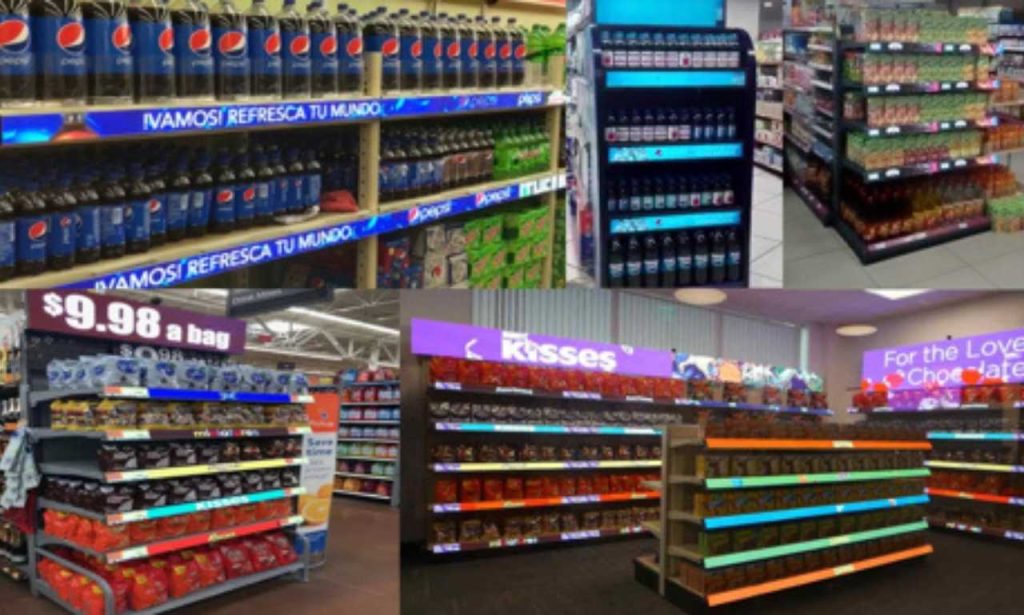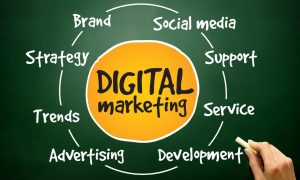The retail landscape continues its rapid transformation in 2025. Store owners face unprecedented challenges amid shifting consumer habits. Technology offers solutions that blur digital and physical shopping boundaries. Today’s shoppers expect personalized experiences across all channels. Smart retailers embrace these tech innovations to stay competitive. This article explores seven key technologies for retailers in 2025. These innovations help businesses adapt to market demands and build customer loyalty. From security enhancements to in-store digital evolution, these tools create compelling shopping journeys. Let’s examine how these technologies are changing the game for retailers everywhere.
Security

Security remains the foundation of retail success in today’s digital marketplace. Customers demand protection for their personal data above all else, and recent breaches have made shoppers more cautious about where they spend money.
Enhanced Data Protection Systems
Modern retail security goes far beyond traditional surveillance cameras and door alarms. Blockchain technology now secures transaction data with unprecedented protection levels. Biometric authentication methods like fingerprint and facial recognition verify customer identities. Many stores implement multi-factor authentication for all customer accounts.
These systems protect sensitive information while maintaining shopping convenience. Retailers must balance robust security with frictionless customer experiences. The most successful businesses integrate security measures that customers barely notice.
Fraud Prevention Technologies
Artificial intelligence powers new fraud detection systems that spot unusual patterns instantly. Machine learning algorithms analyze thousands of transactions per second for suspicious activity. These tools identify potential threats before they cause financial damage.
Retail employees receive better training to recognize social engineering attempts. Customer service teams now use specialized software to verify caller identities. The best protection combines sophisticated technology with well-trained human oversight.
Getting a 360-degree View of the Customer
Understanding customers completely has become essential for retail success today. Shoppers expect businesses to recognize them across multiple shopping channels, and their patience for irrelevant recommendations or repetitive questions has disappeared.
Unified Customer Profiles
Advanced customer data platforms now combine information from numerous touchpoints. These systems track purchases, browsing behavior, social media interactions, and support history. They create comprehensive profiles that reveal true customer preferences and needs.
The technology works quietly behind the scenes to update profiles in real time. Sales associates access this information through mobile devices while helping shoppers. Marketing teams use these insights to create highly targeted campaigns with better results.
Behavior Analytics
Smart retailers analyze shopping patterns to predict future customer needs. These tools examine past purchases alongside seasonal trends and market conditions. They reveal opportunities for personalized offers that arrive at perfect moments.
The technology considers factors like weather, local events, and economic indicators. It helps retailers stock exactly what customers want before they even ask. Stores using these systems report significant increases in customer satisfaction scores.
Voice Assistants

Voice technology has evolved from simple commands to sophisticated retail assistants. Customers increasingly expect to shop using only their voice, and this trend is gaining momentum across all age groups.
Voice-activated store guides help shoppers locate products quickly and efficiently. These systems understand complex requests involving multiple items or departments. They reduce customer frustration while freeing staff for more valuable interactions.
The technology works through smartphone apps or dedicated devices throughout stores. It answers common questions about product availability, specifications, and pricing. Many retailers report shorter shopping times and higher satisfaction ratings.
Voice-Enabled Shopping
Smart speakers now handle complete transactions from product search to payment confirmation. These systems remember customer preferences and previous orders for faster shopping. They suggest complementary items based on purchase history and current selections.
The technology integrates with loyalty programs to automatically apply relevant discounts. It also handles scheduling for services and installation when necessary. Voice shopping particularly appeals to busy customers who value convenience above all.
Buy Online, Pick Up In-Store
The blend of online browsing and physical collection continues growing in popularity. Customers appreciate the convenience of digital shopping with immediate gratification. This hybrid approach effectively addresses common e-commerce pain points.
Streamlined Pickup Systems
Modern pickup areas feature automated lockers accessible through mobile apps. Digital signage guides customers through the collection process without employee assistance, and advanced inventory systems ensure products reach pickup locations before customers arrive.
The technology coordinates with traffic patterns to suggest optimal collection times. It manages staff assignments to maintain consistent service quality throughout the day. These improvements have reduced average pickup times by nearly 40 percent.
Inventory Visibility Technology
Real-time inventory tracking shows exact product availability across all store locations. These systems automatically synchronize online listings with physical shelf stock, preventing frustrating situations where advertised items prove unavailable.
The technology enables precise promises about pickup timing and availability. It helps staff locate items quickly when preparing customer orders. Accurate inventory data also substantially reduces wasteful overstock situations.
Augmented Reality in Chatbots
Customer service has transformed through the integration of visual elements in conversations. Text-only support no longer satisfies shoppers accustomed to rich media experiences. Augmented reality brings products to life during customer interactions.
Visual Product Support
AR-enhanced chatbots show products in customers’ actual spaces before purchase. These systems demonstrate product features through interactive 3D models. They answer questions by highlighting relevant parts of the item visually.
The technology helps customers understand product dimensions and appearance accurately. It reduces returns by setting realistic expectations before purchase. Many retailers report significant conversion rate improvements with these tools.
Interactive Troubleshooting
Support chatbots now use AR to solve common product problems visually. These systems guide customers through setup or repair procedures step by step. They recognize products through smartphone cameras to provide specific instructions.
The technology reduces support calls while improving customer satisfaction ratings. It helps shoppers resolve issues immediately without waiting for assistance. These capabilities particularly benefit complex product categories like electronics and furniture.
AI-driven Predictive Analytics
Data analysis has moved beyond historical reporting to actionable future insights. Retailers now anticipate market shifts before they become obvious to competitors. This forward-looking approach creates significant competitive advantages.
Demand Forecasting
Advanced algorithms predict product demand with remarkable accuracy. These systems consider historical sales alongside hundreds of external variables. They help retailers stock precisely what customers will want next season.
The technology reduces excess inventory while preventing disappointing stockouts. It considers factors ranging from social media trends to economic indicators. Retailers using these tools report inventory cost reductions averaging 23 percent.
Personalized Marketing Automation
AI systems create individual marketing plans for thousands of customers simultaneously. These tools determine optimal message timing, channel, and content for each person. They continuously learn from response patterns to improve future communications.
The technology identifies which products will interest specific customers most. It crafts messages that speak directly to individual preferences and needs. These personalized approaches typically generate three times more responses than generic campaigns.
In-store Digital Evolution
Physical retail spaces continue to transform into technology-enhanced environments. Stores now function as interactive brand showcases rather than simple product warehouses, and digital tools create memorable experiences impossible in traditional settings.
Smart Shelves and Displays

Interactive shelf systems change pricing and information based on who stands nearby. Digital displays show personalized recommendations when recognizing regular customers. These systems highlight complementary items based on what shoppers have already selected.
The technology adjusts content based on time of day and current store traffic. It showcases high-margin items during strategic moments throughout shopping trips. These smart systems typically increase basket sizes by 15-20 percent.
Automated Checkout Evolution
Self-checkout has evolved from frustrating to genuinely convenient. Computer vision systems identify products without scanning barcodes. Shoppers simply collect their items and walk out while payments are processed automatically.
The technology handles complex situations like produce weighing and age verification. It integrates with loyalty programs to apply relevant discounts instantly. These improvements have reduced checkout times by over 60 percent in many stores.
Conclusion
Retail technology will continue advancing at a remarkable speed in 2025. The most successful businesses combine these innovations thoughtfully rather than chasing every trend. They select technologies that address specific customer pain points and business challenges.
Security forms the foundation for all other innovations. Customer insights drive personalized experiences across physical and digital channels. Voice assistants, pickup services, and AR enhance convenience throughout the shopping journey.
Predictive analytics helps retailers stay ahead of changing market conditions. In-store digital tools create memorable experiences impossible online. Together, these technologies create retail environments that truly meet modern customer expectations.
The future belongs to retailers who balance technology with authentic human connection. Those who implement these seven key technologies thoughtfully will thrive. Their success comes not from technology itself but from how it enhances the customer relationship.
Also Read: Why Marketing In Manufacturing Is Increasingly Going Digital
FAQs
Retailers should focus on data encryption, multi-factor authentication, and AI-powered fraud detection systems.
They enable hands-free shopping, provide in-store navigation, and offer personalized product recommendations based on past purchases.
It combines online convenience with immediate product availability and eliminates shipping costs and delivery waits.
AR allows customers to visualize products in their space and receive visual troubleshooting guidance instead of text-only instructions.
Stores now feature interactive displays, smart shelves, automated checkout systems, and digital wayfinding tools.



